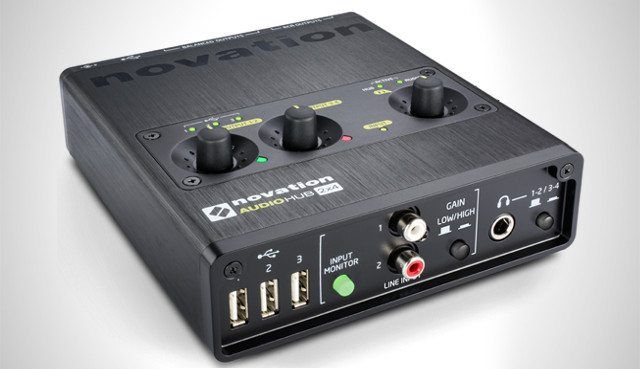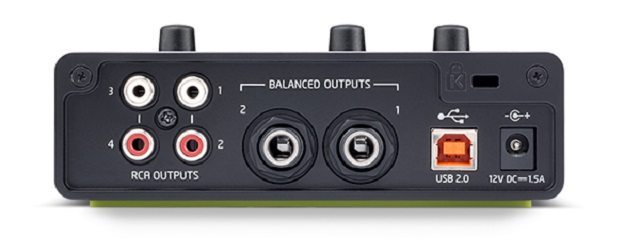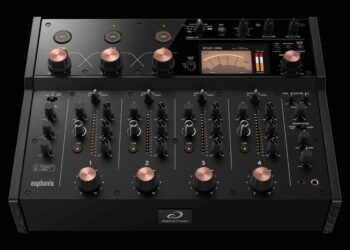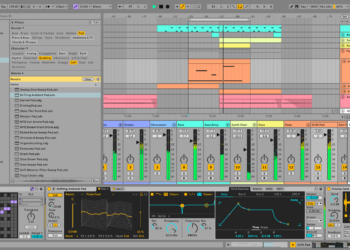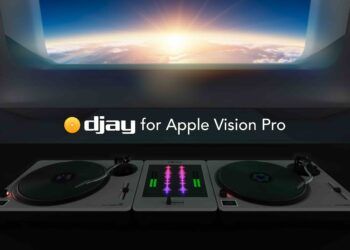Any producer or DJ knows that once your set-up grows into multiple devices there also comes the task of finding a way to connect everything into a computer. There are multiple audio interfaces out there and USB hubs to test but there are many factors to consider. (Latency, Sound Quality, Pre-amps, ect.) Novation announced today a new audio interface, the Audiohub 2×4, which is a combined audio interface and USB hub with Focusrite sound quality. Read more inside about how this soundcard could be a solution for producers and DJs.
Condensing Your Set-up
The Audiohub 2×4 is a promising solution for all the clutter that a DJ or producer probably faces. The first prominent feature is the three USB 2.0 ports that provide bus-powering for those MIDI devices. This hub will allow for an array of devices to be connected into the Audiohub 2×4 and transmitted via a USB cable from the audio interface into the computer. This saves valuable USB real-estate while ensuring your devices have a quality connect. Now, the bus powered functionality does require a power supply but that is still a better option to carry around one power supply rather than multiple ones.

Quality Audio
Focusrite is known to raise sound quality through their sound cards and engineering. The Audiohub 2×4 features a 96 kHz, 24-bit audio rate to ensure high quality audio sampling in and out. The card also features matched RCA inputs to capture stereo recordings of any analog gear whether it be vinyl for DJing or a synth for production. The Audiohub 2×4 also features four RCAs, two balanced TRS jacks, and headphone outputs that are “blisteringly loud” according to Novation. These outputs are assured to provide a strong, loud signal that is needed for live performance or DJing.
All-in-One Solution with Ultra Low Latency
The Audiohub 2×4 is definitely a device that should peak interests of DJs and producers, alike. Whether you need to connect a MIDI Fighter, Launchpad, and an S4 or a Maschine MK2, Roland keyboard, and a MIDI Fighter Twister, the Audiohub 2×4 will have you covered. Included in the box will be the device, USB cable, Ableton Live Lite 9, and 1GB of Loopmasters samples so there is no hesitation to get up and running. The Audiohub 2×4 also features an ultra low latency switch for monitoring that provides direct monitoring with nearly no latency on top of the already low USB latency. The Audiohub 2×4 doesn’t have an official release date yet but you can get notified when it is available here.
Are you interested in the Audiohub 2×4? Let us know and we’ll carry it in the DJTT store – where we already offer quality soundcards. Check them out and support DJTT!


